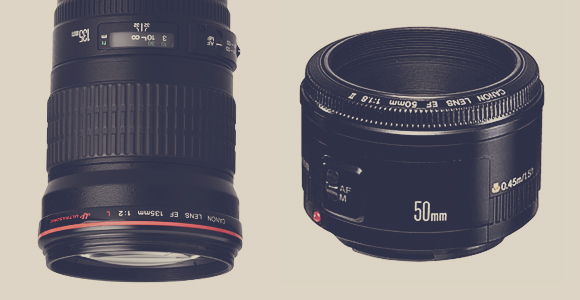If you’ve just picked up a shiny new Digital SLR camera, then you’ve probably had hours of joy tinkering with every button and feature that’s on the thing. The only problem is, now that you’ve found your comfort zone, you’re itching for more.
Upgrading your camera with a new high-quality lens is the perfect adrenaline injection to your photographic passion – but where do you begin? There’s a lot of different lenses on the market and they all do different things. Before you buy, get yourself clued up so you know what you’re getting.
Zoom lens vs. prime lens

Although not in direct competition, each lens offers its own benefits over the other. A zoom lens – as you might have guessed – has an adjustable focal length. These types of lenses give you a lot more options when you’re out and about. You can easily zoom into points of interest without having to reposition yourself too much.
Prime lenses sacrifice this feature for arguably better image fidelity. Their large apertures result in them having much better light-gathering abilities than a zoom lens – you just have to be prepared to move around a bit to get the right view and angle.
Zoom lenses tend to be favoured by those into wildlife photography, where controlling your view is invaluable. Prime lenses tend to be cheaper and lighter than a zoom lens, so they also have their merits. They are typically used by photographers who have to overcome low-light environments.
Tilt shift lenses
Tilt shift lenses empower photographers by removing the shackles of depth of field and perspective. The imaging circle of the lens can shift position relative to the sensor in the body of the camera. The photographer can also tilt the lens to change the focus plane of any image. Tilt shift lenses are typically found in the hands of landscape and architecture photographers.
Macro lenses
A macro lens is usually used for extreme close-up photography. They can focus in on small objects very closely with incredible amounts of detail. They can deliver photos of unrivalled brilliance and quality but they are only as good as the photographer wielding them. Macro photographers must be highly skilled to undertake this meticulous endeavour. Check out our last article on what’s possible with macro photography.
After reading this guide, you should have a better idea of what lens is suited to you. Online camera retailers like Clifton Cameras sell a wide variety of these lenses for Canon and Nikon cameras. Whatever lens you choose, it’s guaranteed to expose you to a world of photography you never thought possible.
 CoalesceIdeas Web and graphic design ideas for inspiration
CoalesceIdeas Web and graphic design ideas for inspiration

